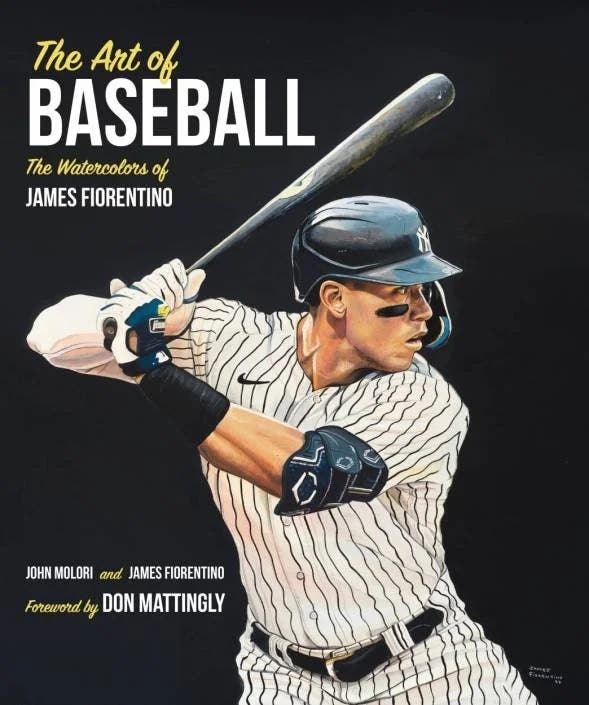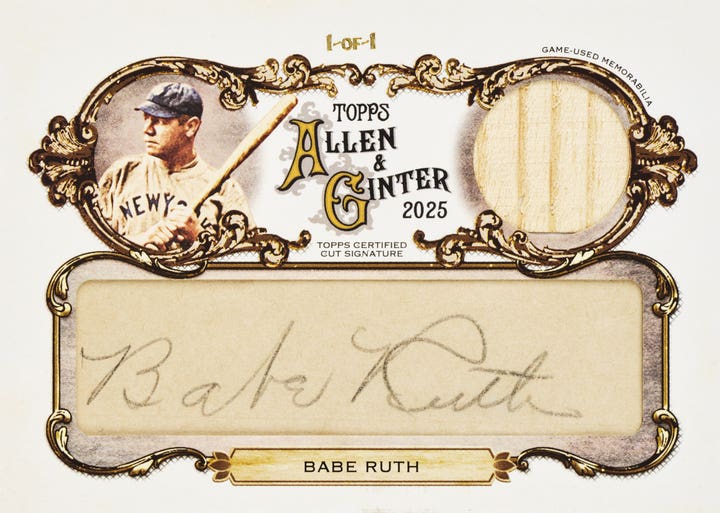News
Securing the Work of Robert Creamer
Like many fellow baseball history enthusiasts, I was saddened to learn of the passing of writer Robert Creamer at age 90 on July 18, 2012. I was doing some gardening and listening to Ed Randall’s “Talking Baseball” radio show on WFAN in New York when he announced Bob’s death. It made me stop what I was doing and sit for awhile, recalling my relationship with this special man.
It was the fall of 1993, and I had been writing stadia articles for SCD for a few months when I happened upon a tag sale fundraiser for the Tuckahoe (N.Y.) Historical Society, which was being held near the high school where I taught and coached football.
I was poking around some toy train boxes when a familiar voice said, “They’re quite collectible,” or words to that effect. I looked up to see the smiling face of Robert Creamer, who was working as a volunteer that day.
I’d never met Bob before, but I felt like I knew him through the reading of his many baseball books and interviews for baseball documentaries such as ESPN’s Sports Century series and When It Was a Game. (He would later be featured in Ken Burns’ Baseball, as well.) He had also been a senior editor at Sports Illustrated for more than 30 years.
Seizing the moment, I introduced myself as an ardent reader of his works and a fledgling writer of baseball history. We made small talk (thankfully, he knew of SCD), and I asked if I might be able to interview him someday on the subject of ballparks. As was his way, Bob told me to give him a call anytime so we could chat.
The SCD article was published in the March 4, 1994, issue, and it was the first time I’d ever interviewed anyone. We’d sat in the kitchen of his Victorian house in Tuckahoe over coffee as he told stories of his travels to various parks around the majors, his feelings on the first wave of “retro” parks, his childhood collection of Goudey cards and his acquisition of two Polo Grounds folding chairs, which he kept on his patio. Bob also shared his recollections of his visit to Barry Halper’s legendary basement museum, and his subsequent profile of the collection for Smithsonian magazine.
When the SCD article came out, I brought him a copy, and he was pleased with it. He then asked me what I was currently working on; after a deep breath I said, “Well, there’s this novel I’m writing with a baseball theme ...”
Let’s face it, every writer would like to produce The Great American Novel. My goal, both then and now, is to produce A Novel (Editor’s note: Paul has done so, click here to check it out). The idea I had back then was for a dual-plot story that takes place in 1927 involving a young lad who comes to America from Ireland and works his way onto the pitching staff of the woeful Boston Red Sox. The seed for my idea came from my friendship with a man from my town, Bob “Lefty” Cremins, who had actually pitched on that staff for the last month of the ’27 campaign and had regaled me with stories of his swing through the American League and various characters he’d either met or faced in game situations, among them Ty Cobb, Babe Ruth and Lou Gehrig. In my novel, “Lefty” would befriend the protagonist, Martin Clancy, when he joined the BoSox staff.
“Sounds like an interesting idea,” said Creamer when I ended my brief overview.
“Bob,” I said, “since you’ve written the definitive Babe Ruth biography, Babe: The Legend Comes to Life (1974), would you mind reading my manuscript for historical accuracy?”
“Sure,” he said, “just bring it by whenever you’re ready.”
Bob’s offer was both encouraging and intimidating. You see, through our conversations to that point he had many times touched upon the tremendous amount of research that was involved in producing such classics as Stengel: His Life and Times, Summer of ’41 and Season of Glory (with Ralph Houk). The Ruth bio alone had taken years and entailed crisscrossing the country to speak with surviving teammates and opponents from that era. (I would learn the true magnitude of this research later on, as you’ll see.) I knew that I’d better be on my toes historically in my own storytelling so as not to embarrass myself.
Well, I’m proud to say that all the historic references and situations I worked into the plot passed Bob’s muster with flying colors. In fact, he was pretty enthusiastic about the entire manuscript, titled Rovers: A Tale of Fenway. I can’t tell you how much fun it was to visit with Bob and hear him take a single event I had mentioned in 1927 and expand on it. Some great times, let me tell you.
[Alas, I’m still trying to find an agent who will see things the same way, but if any of you out there in SCD-land are a literary agent or know of one that would like a well-researched baseball novel, please let me know!]
After our collaboration on the novel, Bob and I fell out of touch for a while, though I would always see him in documentary sound bites on TV. I had been living in Connecticut for a few years when, out of the blue, I heard from Bob. After catching up on my life, he related that he’d lost his beloved wife Margaret a year or so earlier and needed my help with something. Could I take a trip down to Tuckahoe? Of course, I was on my way within a couple days.
I arrived at the old Victorian to witness a distressing scene. The house, which was clearly missing his wife’s touch, was in the process of being cleaned out. Bob wearily welcomed me and said he was moving to Saratoga, N.Y., to live.
“Do you need help moving stuff?” I asked.
“No,” he replied, “but I have some things, books mostly, that might be interesting. I thought of you right away, because I know you’re a reader.”
“Sure, I’d be glad to take a few,” I offered.
He led me up to his office, the converted third floor of the Victorian, which I had never seen before.
When we reached the third floor, my jaw dropped. There were hundreds of books, on floor-to-ceiling shelves or in piles, in every space. Bob’s desk, littered with papers and files, was stationed in the middle of the room. “As you can see, I have quite a reference library,” he said in his characteristically understated manner. “Plus, a lot of my writer friends send me first editions of their books when they come out.”
“Uh-huh,” was all I could manage.
“Unfortunately,” he went on, “I have no room at all where I’m moving for all this. I’d like to offer to you whatever you’d like, because I’ve already contracted with someone to clean out the place next week and throw out whatever’s left.”
“Bob, you can’t do that!” I blurted. “It would be a crime to just trash this collection.”
“Well, does that mean you want it?”
Time to put up or shut up. “Yeah, I’ll take it,” I said bravely.
“That’s fine,” he said, genuinely happy. “There are also a few boxes of some odds and ends I’d like you to have.”
“Odds and ends?”
“You know, programs, scorecards and whatnot. An antique dealer friend of mine already came over and gave me a few dollars for all my old World Series press pins and such, but there’s a lot more stuff he passed on.”
“And nobody in your family wants it?” I said.
“Either no room or no interest,” he explained.
I surveyed the scene. “Had I known the scope of this, I’d have removed the seats from my minivan,” I said. “Even so, I’ll need to get a lot of boxes. This is going to take me at least two trips. But still, there’s gotta be some items in those boxes with value. Let me at least give you something for all this.”
“Fine, but remember, it’s just going to be thrown out,” he shrugged.
So I gave him $100, which made me feel better, anyway. But the adventure, I would learn, was only beginning.
I packed the boxes of “odds and ends” into my van and drove home, explained the situation to my incredulous wife, and started rounding up all the boxes I could for the books. I also procured a huge rolling book cabinet from my school’s custodian for all the overflow there would be after I selected the 50 or so volumes I could fit into my own small library at home.
A few days later, I made the second trip to Bob’s and began loading the book boxes. After a couple hours I was about done, and boy was I tired. His office was now pretty much cleaned out. But as I was finishing up, I couldn’t help but notice a waist-high latched door under the attic eaves. “Uh, what’s in there, Bob?” I asked, hoping the answer would be “Nothing.”
“Oh,” he said, “that’s real junk. Just old papers, notes and manuscripts.”
“For what?”
“My books,” he said blandly.
Again, I was floored. On my hands and knees I pulled out no less than 10 fairly large
cardboard boxes, most musty and water damaged, that contained the research notes, correspondence, various drafts and galley proofs for the Robert Creamer collection. I sat back, dirty and overwhelmed. “Bob,” I said evenly, “You can’t tell me you’re going to throw this out. It’s your life’s work.”
“So that means you’ll want this, too?” he asked, the slightest hint of hope in his voice.
“I guess so.”
I brought all the boxes to school and methodically started sorting through them whenever I had a free period. Bob had kept everything, from notes written on the backs of envelopes to pages and pages of longhand loose-leaf tidbits to letters of correspondence and hotel slips from his research travels and book signing tours. Not to mention tons of news clippings, literary reviews and, of course, first, second and third manuscript drafts, all of them banged out on a conventional typewriter, with handwritten corrections.
A lot of the stuff, unfortunately, had suffered water damage and had been infested with bugs called “silverfish.” But I kept at it, and about a year later had the materials broken down into boxes according to the book titles. As for the “odds and ends,” I traded some programs and such with other collectors and kept other choice items, happy I’d paid Bob for it all. (I guess his antique dealer friend couldn’t be bothered picking through the piles of ephemera beyond the obviously valuable press pins.)
A couple years later, with the bulk of the materials stored at school, esteemed biographer Leigh Montville contacted me as he was working on his 21st century biography of Ruth titled The Big Bam. Leigh had called Bob for some research help and Bob, ever accommodating to other writers, referred him to the “keeper of the Creamer vault,” namely me. I was happy I could help Leigh out by giving him access to the Ruth materials, which were by now categorized and boxed.
“This must’ve been some job,” he said, surveying the now six-box hoard in the school store room.
“You have no idea,” I replied.
But then, just a few months later – disaster!
I had always feared that a fire or flood might destroy the Creamer papers. What I didn’t expect was that our head custodian, who had been extremely understanding in allowing me to store the boxes, would come to me one day with the sad news that he’d been ordered to clear that area for other purposes, and quickly. Yikes!
Then I remembered Peter Clark, who at the time was in charge of donations at the Baseball Hall of Fame and whom I’d profiled in a SCD article. Without sounding too desperate, I explained that I had the Robert Creamer papers, and would the Hall want them for their archives?
Peter asked that I type up a comprehensive list of the items and send them along so they could be voted on by the acquisitions committee. This I did, and was overjoyed to learn that they would be proud to have Bob’s papers included in their collection (they had recently been given a similar accumulation by the author Roger Kahn of Boys of Summer fame). So, off to the UPS store I went with my treasure trove, for which the Hall rewarded me with a lifetime donor’s pass (they picked up the shipping costs, thankfully).
Much relieved, I contacted Bob in Saratoga (he’d been granted a lifetime pass and letter of thanks, as well). Characteristically, Bob was shocked that the Hall of Fame would actually want his stuff, but happy it would be available to other writers and researchers going forward.
As for me, I still have a lot of the books from that musty Victorian attic, though none are as valuable as the handful of Bob’s first editions that he personalized to me. What I’ve sold or will sell of the dwindling “odds and ends” are helping to finance future writing projects as I continue to chase that elusive dream of seeing my novel in print. Bob would like that.
I’ve always felt that “great writers make you want to write great.” That is why I’ll always remember fondly the great Robert Creamer.
Until next time, please stay seated!
Collectors can contact Paul Ferrante via e-mail at baseballjourney@optimum.net. Check out Paul’s blog at www.paulferranteauthor.com.








